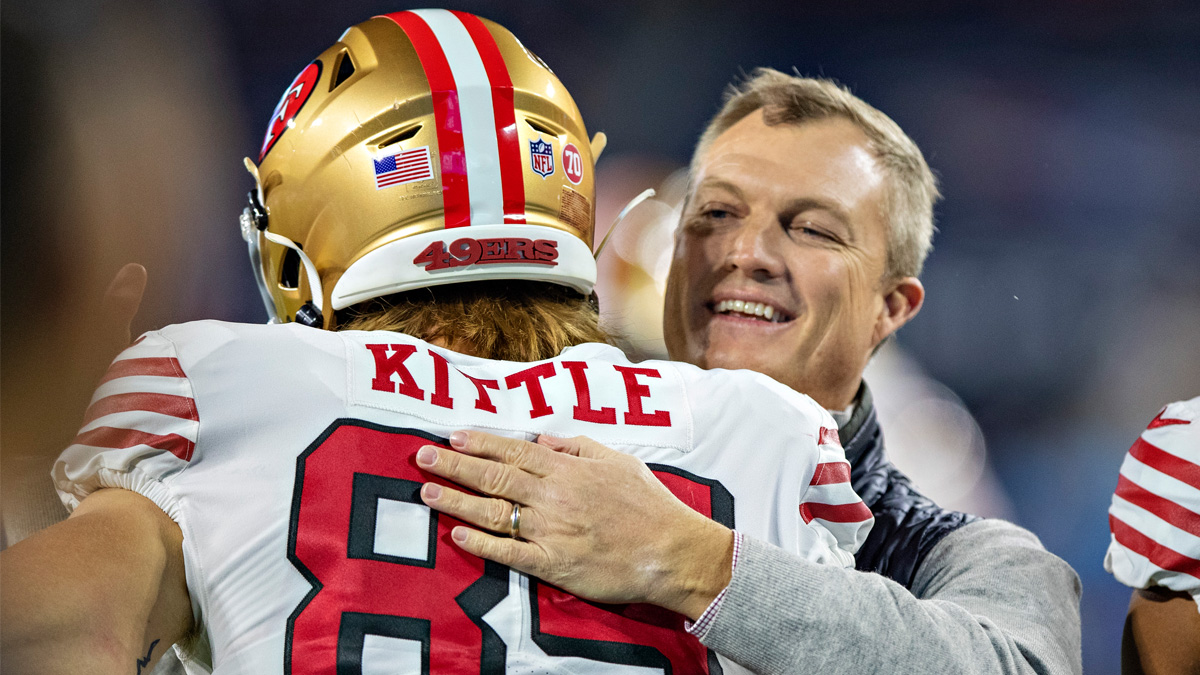Dwight Clark’s death Monday was not merciful. ALS is never merciful. It is cruel and remorseless and spares nobody.
But the 49er great, the 1A to Joe Montana’s 1 in The Catch, the most iconic moment in team history, was given the closest thing one can hope for with ALS – a dignified passing.
Clark died in Montana only a few days after entering hospice, and his family and selected loved ones were with him at the end. It is the best that ALS allows, and Clark had been given the best that could be provided.
With our All Access Daily newsletter, stay in the game with the latest updates on your beloved Bay Area and California sports teams!
Clark’s time from diagnosis to death was relatively brief as these things go, less than three years from the moment he first noticed his left hand was weakening, but he wedged as much living and reminiscing with friends and teammates as those months granted. He chose to be public on his own behalf and constructive in service to others through his story, and in both those endeavors he succeeded as much as the disease took from him.
And though he will be remembered most for that leaping grab over the agonized look of Dallas’ Everson Walls that propelled the 49ers to their first Super Bowl, his transition should not be forgotten, for its dignity and bravery against a disease that allows precious little of either.
Clark was one of Bill Walsh’s most famous finds during the construction of the 49er dynasty – he was scouting Clemson quarterback Steve Fuller at the time but fixated on Fuller’s target during the workout, a lanky, surehanded receiver whom Walsh lifted from the usually earned obscurity of the 10th round and developed into Montana’s first dynamic weapon. 1981 was not only his most famous year but his most prolific statistical one (85 catches, 1,105 yards, though he had 60 catches for 913 in the strike-shortened 1982 season), and though he remained a useful target for Montana until the end of his career in 1987, he eventually lost his role of most preferred to Jerry Rice by 1984 – a transition he accepted with both good humor and logic.
He later joined 49er executive Carmen Policy in Cleveland and served as general manager with the Browns, though then as now the Browns were too difficult a task to complete, and he returned to San Francisco as he arrived, one of the most beloved 49ers ever. He was an ambassador and a loyal servant for the club until he passed, and he remained one of former owner Eddie DeBartolo’s favorite players through it all; DeBartolo saw to a number of the details of his care once he was diagnosed.
San Francisco 49ers
Find the latest San Francisco 49ers news, highlights, analysis and more with NBC Sports Bay Area and California.
But Clark knew when he was told in 2015 that the end of his glorious ride was coming. ALS remains undefeated, and what it allows its victims is a test of grace in the face of certain defeat. In this, he was as brilliant as he was that January day in early 1982, when he once and forever became part of the firmament of the 49ers. The end was not merciful, because it never is, but it did not steal Dwight Clark’s essence. That he held until today, when he passed it on to thousands of people who remember him as a player, executive, agreeable and generous companion and general eminence.




